Air defense for the emperor
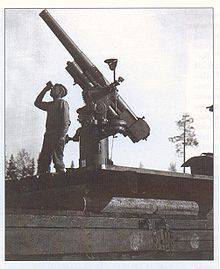 Few people know that the Air Defense Forces (AA) in Russia appeared under Emperor Nicholas II (1894-1917). "Shield" - weapon defense, always keeps up with the "sword" - the weapon of attack. With the advent of airplanes and the beginning of their use in military affairs, the question of their forced grounding also arose.
Few people know that the Air Defense Forces (AA) in Russia appeared under Emperor Nicholas II (1894-1917). "Shield" - weapon defense, always keeps up with the "sword" - the weapon of attack. With the advent of airplanes and the beginning of their use in military affairs, the question of their forced grounding also arose.The first experimental firing at air targets (tethered balloons and balloons) was conducted at the end of the 19th century - 1890, at the Ust-Izhorsk training ground, and in 1891, at the Red Village. 1908, in Sestroretsk, was made an experience of shooting at a moving target (the balloon was tied to horses tied to it), in 1909, the experience was repeated under Luga. They fired field 3-x inch guns, tests showed that aerial targets can be destroyed, but there is a need to create a special anti-aircraft gun.
Russian military thought was ahead of the bone bureaucratic machine, even in 1901, military engineer MF Rosenberg created a project for the 1 anti-aircraft gun (57-mm), but his idea was considered not worthy of attention and was rejected. In 1908, the issue of the need to create an anti-aircraft gun was raised by specialists from the Officer Artillery School and the Mikhailovsky Artillery Academy. The officers M.V. Dobrovolsky, E.K. Smyslovsky, P.N. Nikitin prepared tactical and technical characteristics, V.V. Tarnovsky made a proposal to install a cannon on a car to increase the mobility of anti-aircraft batteries. In 1913, the project was approved by the Main Artillery Directorate.
The development of the gun itself was led by the technical director of the Artillery Technical Office of the Petersburg Putilov Plant, F. F. Lender. He was assisted by artillery officers V. V. Tarnovsky, P. A. Glazkov, workers F. M. Garkovsky, A. Ya. Nadyadovsky, V. I. Biryukov. In 1914, the gun was created, the first sample 4-e was installed on the 5-ti cars of the Russian-Baltic plant (they were sent to protect Tsarskoye Selo), at the beginning of 1915, the weapons were successfully tested and put into service. A shrapnel shell was used as an ammunition; in an explosion, it gave shattering fragments up to 500 meters. In total, before 1918, 148 “autocannons” were manufactured. The guns were mounted on cars, carts, railway platforms and could protect troops on the march.
Tactical and technical characteristics of the gun Lender:
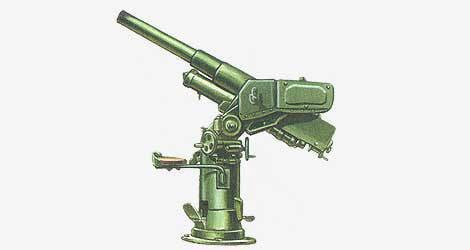 Caliber - 76, 2 mm;
Caliber - 76, 2 mm;Weight in the fighting position - 1300 kg;
Barrel length - 30,5 calibers;
The initial velocity of the projectile - 588 meters per second;
Rate of Fire - 15-20 shots per minute;
Maximum vertical shooting range - 6900 meters;
The maximum horizontal range is 8500 meters.
World War I
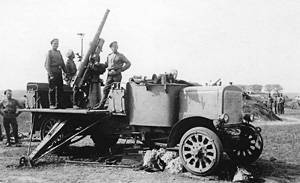 By the beginning of the First World War, Russia (as well as the Allies in the Entente) did not have the means to combat the enemy’s aeronautical vehicles. In the autumn of 1914, the formation of anti-aircraft artillery units began, for their armament they used sea 75-mm guns and 76-mm field guns. Hashed are developing "pit" and tumbovye fixtures to increase the angle of elevation and the possibility of circular attack. The authors of these devices were V.K. Matveev, V.S. Mägi, V.I. Recalov, P.M. Radzivilovich, B.N. Ivanov. The first instruments for determining the lead angle for firing at aerial targets were created - their authors were Ya. N. Perepelkin, A. M. Ignatiev, I. A. Launitz.
By the beginning of the First World War, Russia (as well as the Allies in the Entente) did not have the means to combat the enemy’s aeronautical vehicles. In the autumn of 1914, the formation of anti-aircraft artillery units began, for their armament they used sea 75-mm guns and 76-mm field guns. Hashed are developing "pit" and tumbovye fixtures to increase the angle of elevation and the possibility of circular attack. The authors of these devices were V.K. Matveev, V.S. Mägi, V.I. Recalov, P.M. Radzivilovich, B.N. Ivanov. The first instruments for determining the lead angle for firing at aerial targets were created - their authors were Ya. N. Perepelkin, A. M. Ignatiev, I. A. Launitz.30 November 1914 was created by the Air Defense of the capital of the empire, and Major General G.V. became its chief. Burman. At the beginning of 1915, the 1-I special anti-aircraft battery was created in Tsarskoye Selo. Captain V.V. became its commander. Tarnovsky, in March she was sent to active troops. On June 17, during an air raid by the enemy, the Tarnovsky battery hit 2-w from the enemy's 9-ti, this opened the account of the Russian anti-aircraft artillery. December 13 1915 was given the order to create 4-x light batteries for firing at air targets, this day is considered the day the troops of the air defense were created. Over the years of the war, 251 anti-aircraft batteries went into service.
Errors of the military command resulted in the fact that the issue of the preparation of air defense personnel was not resolved. Only at the end of 1917, in Yevpatoria, an anti-aircraft officer school was created, 1-m its commander became deservedly captain V.V. Tarnovsky; At the same time, a similar school was established on the Northern Front in the town of Dvinsk.
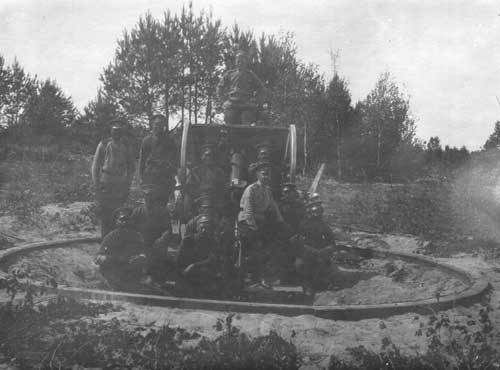
Anti-aircraft artillery (ZA) was still very far from the ideal state, so, according to various estimates, the average consumption of ammunition in 1914-1917. for one downed aircraft ranged from 8000 to 11000 shells. In the 1918 year already 3000 shells. In total for years of this WA Knocked down 1-n from 5 of the destroyed enemy planes.
Genesis aviation Defense
 In January, the 1915 was built at the Russian-Baltic Works, the 1-th RBVZ-C-16 fighter aircraft was built. Its speed was 150 km. per hour, armed with a machine gun that shot through the propeller of the aircraft. June 4 created a special fighter squadron to protect the imperial residence in Tsarskoe Selo. 20 July 1916 is considered the birthday of fighter aircraft.
In January, the 1915 was built at the Russian-Baltic Works, the 1-th RBVZ-C-16 fighter aircraft was built. Its speed was 150 km. per hour, armed with a machine gun that shot through the propeller of the aircraft. June 4 created a special fighter squadron to protect the imperial residence in Tsarskoe Selo. 20 July 1916 is considered the birthday of fighter aircraft.In the First World War, two main types of air defense forces were created: 1) anti-aircraft artillery (FOR), which was armed with special anti-aircraft guns, or field artillery guns adapted for anti-aircraft guns; 2) fighter aircraft. Ensuring their actions was entrusted to the enemy air detection service (later VNOS - aerial surveillance, warning and communication services) and searchlights. Since 1916, air defense barriers began to be used to protect large cities for air defense purposes. At the same time, a local air defense was created in the Russian Empire, the tasks of which were: warning the population about the threat of air attack, camouflage measures, building bomb shelters, eliminating the effects of air raids.
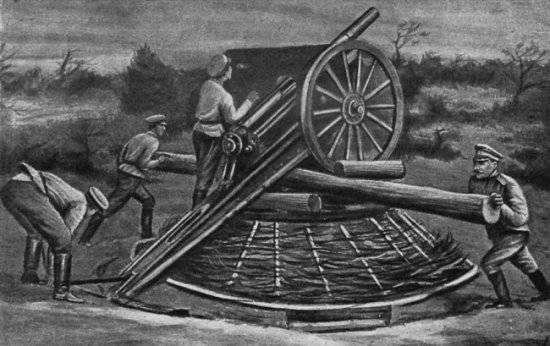
Information